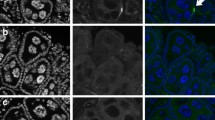Abstract
Wolbachia pipientis is an obligate intracellular endosymbiont of a range of arthropod species. The microbe is best known for its manipulations of host reproduction that include inducing cytoplasmic incompatibility, parthenogenesis, feminization, and male-killing. Like other vertically transmitted intracellular symbionts, Wolbachia’s replication rate must not outpace that of its host cells if it is to remain benign. The mosquito Aedes albopictus is naturally infected both singly and doubly with different strains of Wolbachia pipientis. During diapause in mosquito eggs, no host cell division is believed to occur. Further development is triggered only by subsequent exposure of the egg to water. This study uses diapause in Wolbachia-infected Aedes albopictus eggs to determine whether symbiont replication slows or stops when host cell division ceases or whether it continues at a low but constant rate. We have shown that Wolbachia densities in eggs are greatest during embryonation and then decline throughout diapause, suggesting that Wolbachia replication is dependent on host cell replication.
Similar content being viewed by others
Author information
Authors and Affiliations
Rights and permissions
About this article
Cite this article
Ruang-areerate, ., Kittayapong, ., McGraw, . et al. Wolbachia Replication and Host Cell Division in Aedes albopictus . Curr Microbiol 49, 10–12 (2004). https://doi.org/10.1007/s00284-003-4245-8
Issue Date:
DOI: https://doi.org/10.1007/s00284-003-4245-8




